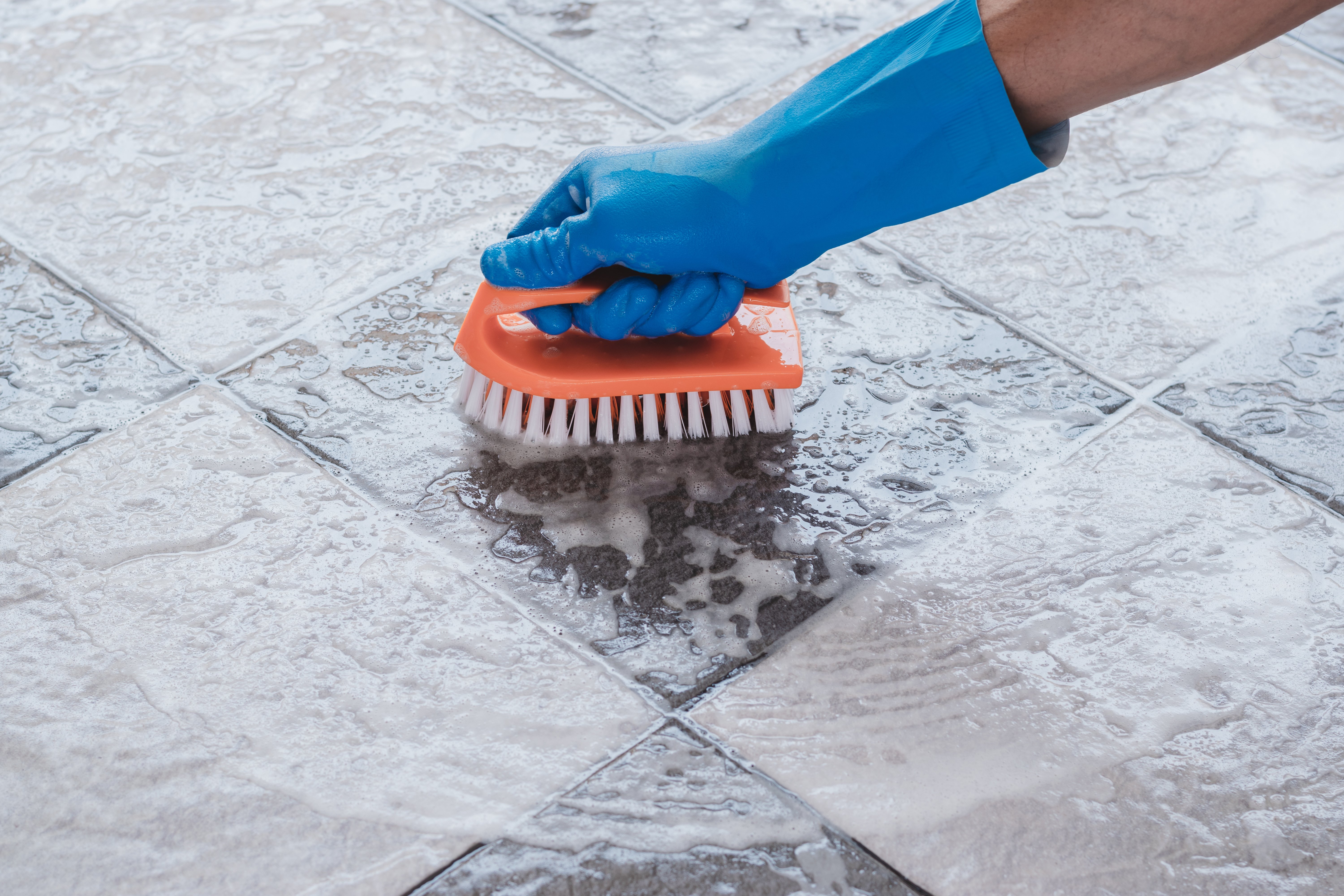
Tile and grout have been around for thousands of years, and during that time quite a few myths have sprung up.
Myth: Bleach is great for deep cleaning tile and grout.
While bleach has a reputation for being a great all-around cleaner, its value for cleaning tile is a myth. In reality, bleach is simply a disinfectant. Its ability to remove stains or whiten surfaces compels many people to use it (in high concentration or even undiluted) when trying to remove tile and grout contaminants or stains.
But frequent use of bleach can eventually weaken the grout’s structure, causing it to become brittle and deteriorate. Believing in that myth can cause serious problems. There are other tile and grout myths that can be equally destructive.
Myth: Acids are safe cleaners for tile and grout surfaces.
Truth: We’ve already mentioned bleach above, but acids are another standby many people turn to in order to resolve tile and grout issues. This is problematic. Although acids may be effective at cleaning tile, they are often used too frequently or are used at strengths that are too aggressive. Most hydrochloric-based acids will dissolve hard water deposits, but can also damage the structure of the grout over time and with continued usage. Too harsh an acid will erode the grout and emit vapors that can tarnish metal fixtures like faucets and stainless partitions. Use only acids specifically formulated for tile and grout applications.
Myth: Harsh scrubbing with an aggressive brush is the best way to eliminate stubborn soiling in grout joints.
Truth: Definitely a myth. Some people use a wire brush on grout joints, which can damage the grout. Never use anything stronger than a soft- or medium-bristle brush with a cleaning solution that emulsifies the dirt so it can be removed with a wet vac.
Myth: Mopping is an effective method of cleaning tile and grout surfaces.
Truth: Yes. And no. It all depends on whether or not mopping is done correctly. It’s essential to use clean water to mop, and more clean water to rinse. Otherwise, you’re just swirling dirt around on the surface, and the tile will look dull and grimy once it dries. Also, once you’ve rinsed the tile, you should remove the moisture with a wet vac. Because grout joints are typically not flush with the tile surface, the joints act as troughs that collect mop water. Unless the tile and grout surface has been sealed, the water will eventually penetrate the grout joints to some degree.
Myth: Leaving soapy water to dwell on tile surfaces promotes more effective cleaning.
Truth: Although it may help loosen dirt, leaving soapy water to dry is a bad idea. Because of its tackiness, soap residue is a dirt magnet. It needs to be rinsed thoroughly with clean water before using a wet vac.
Bonus: It's complicated - Sealing a tile and grout surface will prevent future contamination and eliminate the need for maintenance.
Truth: Not exactly. Correctly cleaning and then sealing a tile and grout surface does reduce the labor of maintenance, but eventually wear-and-tear will erode the sealer in some areas. It needs to be cleaned and refreshed periodically for it to be effective in repelling dirty water and food stains. Routine cleaning such as sweeping and mopping will still be needed – unfortunately, there is no such thing as a self-cleaning floor.
